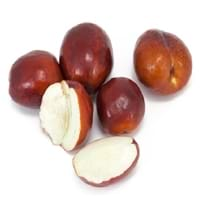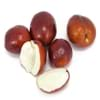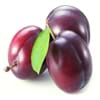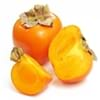Health Benefits
Cancer prevention, Diarrhea treatment, Improves muscular strength, Liver health, Maintains hormonal balance, Reduces nervous tension, Reduces blood circulation problems, Reduces stress, Regulation of heart rate, Treatment of hysteria
Anti depressant, Asthma treatment, Cancer prevention, Heart care, Improves stomach health, Increases metabolic rate, Prevents constipation
General Benefits
Anti oxidant properties, Digestive aid, Flu treatment, Helps in weight loss, Strengthens bones, Treatment of common cold
Anti-inflammatory properties, Boosts immune system, Controls blood pressure, Eye care, Maintains healthy cholesterol level, Strengthens bones
Skin Benefits
Heals sunburn, Hydrates skin, Reduces wrinkles, Skin rejuvenation, Skin revitalization
Anti-aging benefits, Brightens and lightens complexion, Skin cleansing, Treatment of acne, Treatment of skin diseases
Hair Benefits
Promotes longer and healthier hair, Protects hair
Promotes longer and healthier hair, Shiny hair, Treatment of dandruff
Allergy Symptoms
Abdominal pains, Breathing difficulty, Diarrhea, Hives, Itching in eyes, Itching of nose, Nasal congestion, Redness of eyes, Runny nose, Sneezing, Wheezing
Chest pains, Eczema, Hives inside the cheeks, Itching, Skin rash, Swelling, Watery eyes
Side Effects
Decrease in blood sugar levels, Intense headache
Allergic reaction
Lactating Women
Not Available
No
Best Time to Eat
As a snack in the late afternoon, Don't consume at night and before bed, Morning time (before lunch), Strictly avoid empty stomach
As a snack in the late afternoon, Don't consume at night and before bed, Don't eat after meal, Morning time (before lunch), Strictly avoid empty stomach
Vitamin B5 (Pantothenic Acid)
Not Available
Vitamin B9 (Folic acid)
Not Available
Vitamin C (Ascorbic Acid)
Vitamin E (Tocopherole)
Not Available
Vitamin K (Phyllochinone)
Not Available
Lutein+Zeaxanthin
Not Available
Phytosterol
Not Available
Calories in Fresh Fruit with Peel
Calories in Fresh Fruit without Peel
Not Available
Not Available
Calories in Frozen Form
Not Available
Calories in Canned Form
Not Available
Season
Autumn, Summer
Spring, Summer
Varieties
Honey Jar, Sugar Cane, Li, Shanxi Li, Sherwood, Chico, Silverhill, Tigertooth, Winter Delight and Lang
Allstar, Annapolis, Cavendish, Chandler, Earliglow, Flavorfest, Honeoye, Jewel, Northeaster, San Andreas, Seascape, Tribute and Tristar
Color
Green, Red, Yellow
Bright red
Soil Type
Sandy, Well-drained
Loam
Climatic Conditions
Warm to hot climate
Cold
Facts about
- Pigment extracted from Indian jujube is used for silk dyeing in Burma.
- In Korea, jujube wood is used to make wind instrument taepyeongso.
- Fresh jujube is known as Chinese apple & dried form is called as Chinese date.
- Strawberry is the only fruit with seeds on its covering.
- Belgium has a museum dedicated to strawberries.
- Americans eat almost 3.4 pounds of fresh strawberries each year.
- They are believed to be an aphrodisiac.
Top Producer
China
United States of America
Other Countries
Bangladesh, India, Iran, Korea, Lebanon, Pakistan
Egypt, Mexico, Russia, Spain, Turkey
Top Importer
United States of America
Canada
Top Exporter
China
United States of America
Botanical Name
Ziziphus zizyphus
Fragaria Ananassa
Synonym
Ziziphus jujuba or Ziziphus mauritania or Zizyphus jujuba
Not Available
Subkingdom
Tracheobionta
Tracheobionta
Division
Magnoliophyta
Magnoliophyta
Class
Magnoliopsida
Magnoliopsida
Family
Rhamnaceae
Rosaceae
Species
Z. zizyphus
F. ananassa
Generic Group
Not Available
Rose
Difference Between Jujube and Strawberry
We might think that Jujube and Strawberry are similar with respect to nutritional value and health benefits. But the nutrient content of both fruits is different. Jujube and Strawberry Facts such as their taste, shape, color, and size are also distinct. The difference between Jujube and Strawberry is explained here.
The amount of calories in 100 gm of fresh Jujube and Strawberry with peel is 79.00 kcal and 33.00 kcal and the amount of calories without peel is Not Available and Not Available respectively. Thus, Jujube and Strawberry belong to High Calorie Fruits and Low Calorie Fruits category.These fruits might or might not differ with respect to their scientific classification. The order of Jujube and Strawberry is Rosales and Rosales respectively. Jujube belongs to Rhamnaceae family and Strawberry belongs to Rosaceae family. Jujube belongs to Ziziphus genus of Z. zizyphus species and Strawberry belongs to Fragaria genus of F. ananassa species. Beings plants, both fruits belong to Plantae Kingdom.









